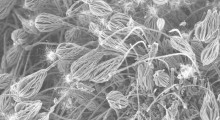In the future, a woman with a spinal cord injury could make a full recovery; a baby with a weak heart could pump his own blood. How close are we today to the bold promise of bionics—and could this technology be used to improve normal human functions, as well as to repair us? Join Bill Blakemore, John Donoghue, Jennifer French, Joseph J. Fins, and P. Hunter Peckham at "Better, Stronger, Faster," part of the Big Ideas Series, as they explore the unfolding future of embedded technology.
Research and publish the best content.
Get Started for FREE
Sign up with Facebook Sign up with X
I don't have a Facebook or a X account
Already have an account: Login
 Your new post is loading... Your new post is loading...
 Your new post is loading... Your new post is loading...
|
|











